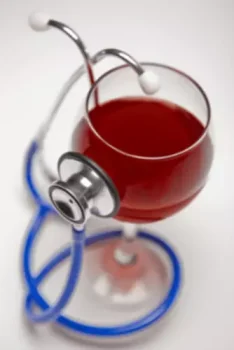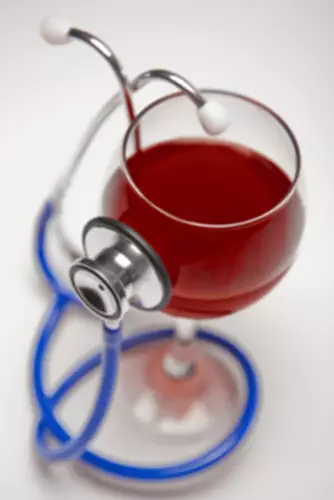
There are a number of factors that determine how dangerous alcohol consumption is while taking blood thinners. First, only prospective cohort studies were included in this meta-analysis, which avoided the selection and recall bias in case–control studies. Second, the total sample size was large, and no obvious heterogeneity was observed across studies, which enhanced the robustness of the findings. Third, various analyses were performed in this study, including sensitivity analysis, dose–response analysis, subgroup analyses, and publication bias analysis. Questionnaires were interviewer-based in the participants’ home language and provided details regarding demographic and lifestyle factors, including tobacco.
Why is it a risk?

This literature review is the foundation of the current alcohol consumption guidelines. The authors declare that the research was conducted in the absence of any commercial or financial relationships that could be construed as a potential conflict of interest. PLOS authors have the option to publish the peer review history of their article (what does this mean?). If published, this will include your full peer review and any attached files. The data should be provided as part of the manuscript or its supporting information, or deposited to a public repository.
The Link Between Falls and Blood Clots
As females retain is alcohol a blood thinner more alcohol in the bloodstream than males, they are at higher risk of developing problems from combining alcohol with medications. If you know you’re vulnerable to alcohol misuse, try not to put yourself in an environment that will encourage excessive intake. The lowest risk of CAD deaths was found in people consuming approximately one to two alcoholic equivalents.

How Long Do These Effects Last?
- Because alcohol has direct effects on the liver, the relationship between fibrinogen and liver enzymes is expected.
- This is a busy trauma center and over a 3 year period only 686 patients were included indicating a certain population was targeted.
- Both alcohol and blood thinners like warfarin (Coumadin) thin your blood.
- However, there is no such thing as completely safe drinking, so if you have any concerns about heart health, it is better to avoid drinking.
Participants’ weight and height were measured to calculate body mass index (BMI; kg/m2). Waist circumference was measured at the narrowest point between the 10th rib and iliac crest. Blood pressure – systolic and diastolic – was measured with the OMRON HEM-757 apparatus (Omron Healthcare, Kyoto, Japan) with the cuff on the left arm. This section collects any data citations, data availability statements, or supplementary materials included in this article.
- Although alcohol thins the blood, long-term use can have a different effect.
- A 2013 study of almost 60,000 people found no difference in the risk of blood clots between wine or beer drinkers.
- This study investigated whether alcohol intoxication (AI) increases the risk of venous thromboembolism (VTE) by using the Taiwan National Health Insurance Research Database (NHIRD).
- This is an open-access article distributed under the terms of the Creative Commons Attribution License (CC BY).
- The amount of resveratrol in food and red wine can vary widely.
Does Alcohol Affect Deep Vein Thrombosis?
According to the National Institute on Alcohol Abuse and Alcoholism (NIAAA), almost 87 percent of people in the US, ages 18 and older, drank alcohol at least once in their lives. About 70 percent of adults drank at least one alcoholic beverage in the past year, and around 56 percent report that they drank in the past month. Healthcare professionals will consider these factors when interpreting MCV results. Healthcare professionals use this measurement to help diagnose the cause of anemia or diagnose other conditions. Having atypically large or small RBCs may indicate a person has certain medical conditions. Scientists have established the link between MCV and alcohol use, as large quantities of alcohol can enlarge the red blood cells.

- Clots form naturally all the time to heal internal and external injuries.
- A forest plot showing risk estimates estimating the association between alcohol consumption and venous thromboembolism risk.
- For information about this choice, including consent withdrawal, please see our Privacy Policy.
- However, it is always advisable to consult a doctor or pharmacist before drinking alcohol with any new medication.
- No use, distribution or reproduction is permitted which does not comply with these terms.
Fibrinolysis shutdown is a contrasting phenomenon of hyperfibrinolysis, in which fibrinolysis is abnormally reduced. Similar to previous findings, our study showed that hyperfibrinolysis had an overwhelmingly higher mortality rate than the other phenotypes. In contrast, fibrinolysis shutdown had a lower mortality rate than hyperfibrinolysis. However, it was higher than the mortality rate of physiologic fibrinolysis.
- The comment about TXA should be removed from the conclusions because the authors have no data to substantiate the statement.
- Alcohol might also slow down the rate at which your body breaks down and removes the blood-thinning drug.
- Previous studies have shown that coagulation impairment due to alcohol cannot be identified with the standard coagulation test, but it can be identified using VHA 2, 3, 21.
- Heavy alcohol consumption thus may increase the drinker’s risk of suffering a stroke.
- The National Institute on Alcohol Abuse and Alcoholism (NIAAA) is one of the many institutes of the National Institute of Health (NIH) and is an exceptional resource, consolidating all things related to alcohol.
While we included two FXIII SNPs, we could unfortunately not measure FXIII levels to provide supporting evidence for the effect of FXIII levels on fibrin clot structure. Statistica® version 13.3 (TIBCO Software Inc., Tulsa, Oklahoma, USA) and SAS System for Windows (SAS Institute Inc., Cary, NC, USA) were used for analyses. Normally distributed data are expressed as mean (95% confidence intervals (CI)), and not-normally distributed data as median (lower and upper quartiles).
Moderate Alcohol Use and Reduced Heart Disease Risk

It should also be noted that the amount of alcohol provided in this study (mixed with soft drinks) equaled that typically consumed in one or two drinks. How long the reduced clotting processes (due to thinner blood) remained in effect was not the focus of the study, and further research is required. A funnel plot of studies assessing incident venous thromboembolism in highest alcohol consumers compared with the lowest alcohol consumers.


